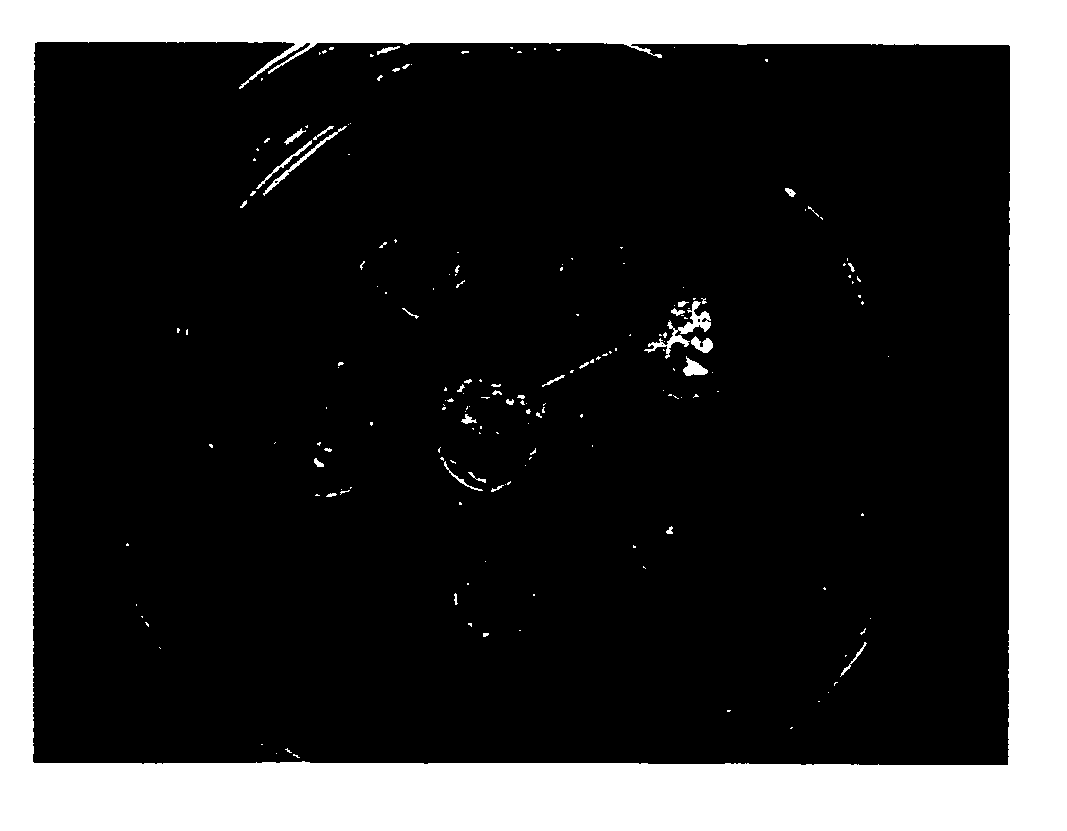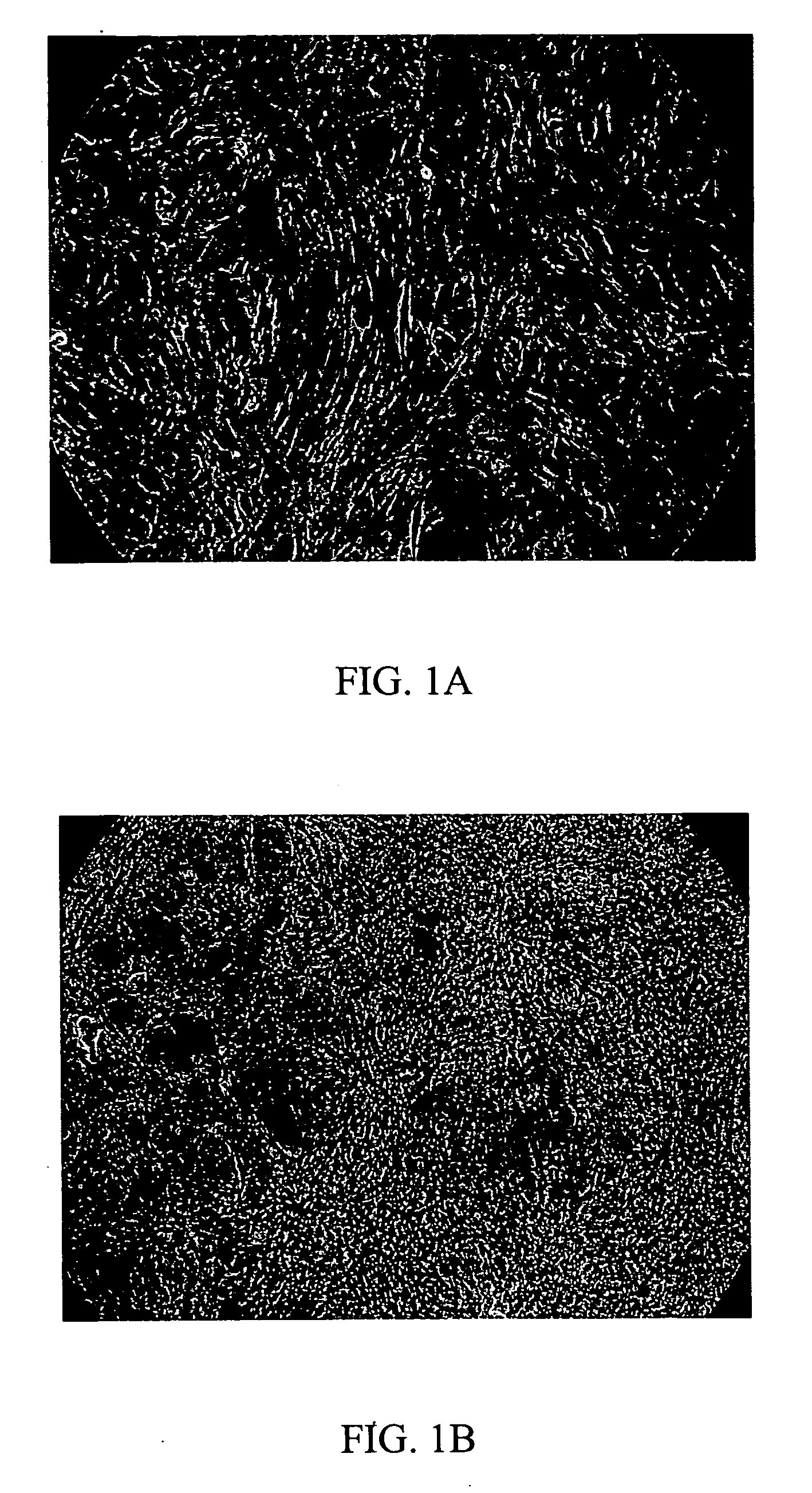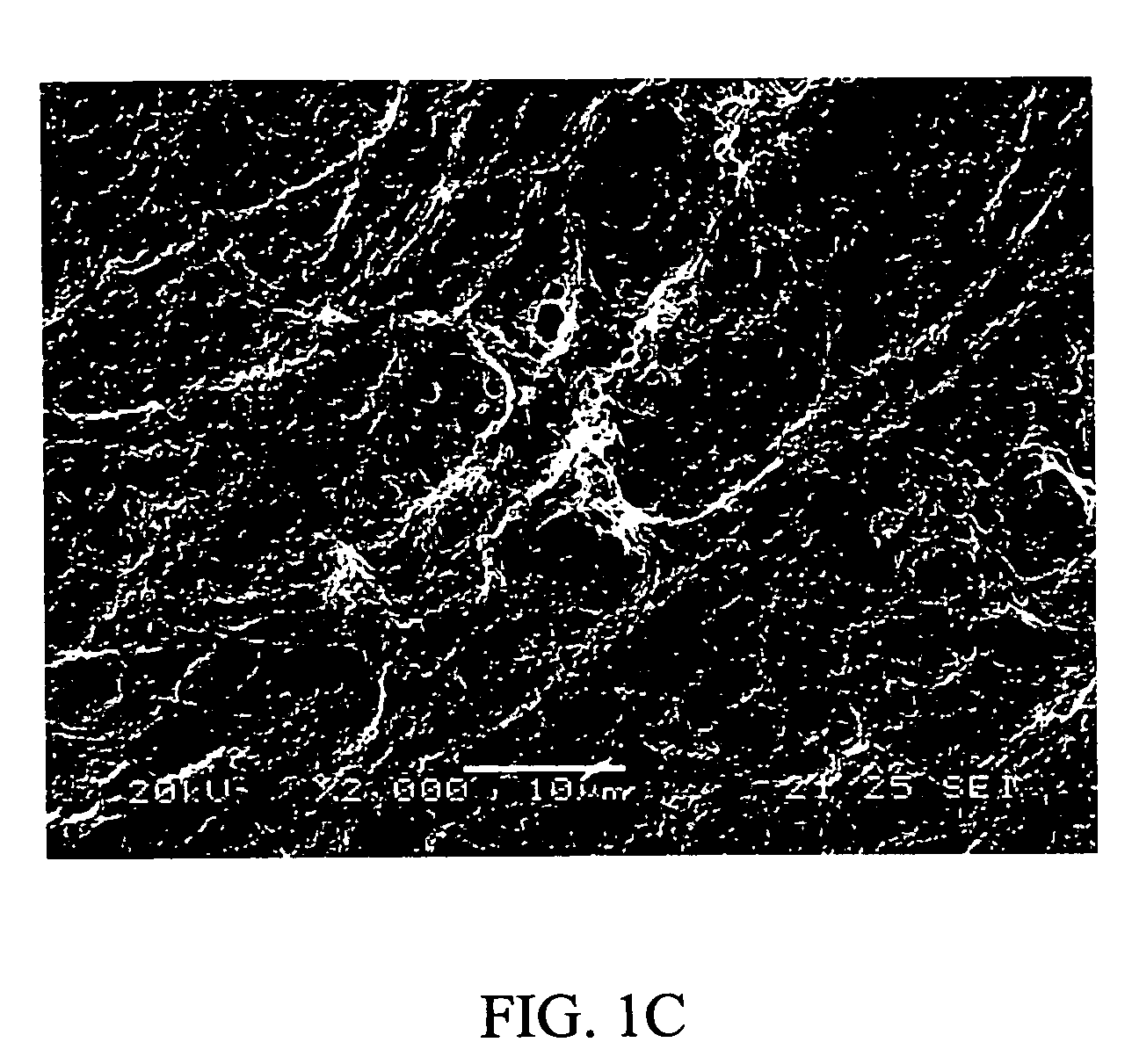Human embryonic stem cells and culturing methods thereof
a technology of embryonic stem cells and culturing methods, which is applied in the field of human embyronic stem cells, can solve the problems of limiting the mass production and application of hes cells, reducing the quality control of cultured hes cells, and reducing the quality of hes cells
- Summary
- Abstract
- Description
- Claims
- Application Information
AI Technical Summary
Benefits of technology
Problems solved by technology
Method used
Image
Examples
example 1
Culture of Human Embryonic Stem Cells
[0047] 1.1 Preparation of Conditioned Medium
[0048] Conditioned medium for maintaining the culture of HES cell was prepared according to the following procedure. Briefly, primary mouse embryonic fibroblasts (PMEF) or human foreskin fibroblast (HFF, obtained from Animal Technology Research Institute, Taiwan) were plated in Dulbecco's Modified Eagle Medium (DMEM, obtained from Gibco Invitrogene) supplemented with 10% fetal bovine serum (FBS, obtained from HyClone). Cell cultures were maintained at 37° C. and 5% CO2 and in a water-saturated atmosphere until they reached confluence, then 10 μg / ml mitomycin C was added to inactivate the fibroblasts. The inactivated fibroblasts were then re-grown in DMEM medium supplemented with 20% FBS, 1 mM β-mercaptoethanl (obtained from Gibco Invitrogene), 1% non-essential amino acids (obtained from Gibco Invitrogene), 1% glutamine (obtained from Gibco Invitrogene), and 1% insulin-transferring-selenium G suppleme...
example 2
Phenotypic Characterization of HES Cells of Example 1.3
[0055] 2.1 Undifferentiation of HES Cells of Example 1.3 Characterized by the Expression of Bio-Markers
[0056] The HES cells obtained in Example 1.3 were analyzed for bio-markers specifically expressed in HES cells to determine the undifferentiated level of HES cells. The bio-markers thus analyzed included alkaline phosphatase; stage-specific embryonic antigen such as SSEA-3, SSEA-4, TRA-1-60, and TRA-1-81; octamer-binding transcription factor 4 (OCT-4); Nanog gene expression, and Telomerase activity. The assayed methods were those described by Richards, M. et al., (Nat Biotechnol., 20(9):933-936, 2002); Xu et al (Nat. Biotechnol., 19(10):971-974, 2001); Thomson J. A. etal., (Science, 282(6):1145-1147, 1998); and Reubinoff B. E. et al., (Nat Biotechnol. 18(4):399-404, 2000).
[0057] The alkaline phosphatase activity was assayed according to the manufacture's instruction provided in the assay kit (obtained from Vector Laboratori...
example 3
Unique Characteristics of the ECM of Example 1.2 in Maintaining the Undifferentiated Growth of HES Cells
[0065] It is unexpectedly discovered that the ECM prepared by this invention is unique in maintaining the undifferentiated growth of HES cells, when compared with ECM prepared by other method, i.e., ECM prepared from feeder cells that were confluent but were not pre-treated with 10 μg / ml of mitomycin C. Results were illustrated in FIG. 11
[0066] HES cells that were maintained in a culture dish covered with ECM of Example 1.2 showed strong alkaline phosphatase activity (FIG. 11B) with 78% of HES cells remained undifferentiated after 5 passages, compared with HES cells that were grown in ECM prepared from feeder cells without pre-inactivation by either mitomycin C or gamma ray radiation (FIG. 11D), in which merely 17% of HES cells remained undifferentiated. The morphology of HES cells maintained in either condition before staining of Alkaline phosphatase activity were illustrated i...
PUM
| Property | Measurement | Unit |
|---|---|---|
| concentration | aaaaa | aaaaa |
| concentration | aaaaa | aaaaa |
| concentration | aaaaa | aaaaa |
Abstract
Description
Claims
Application Information
 Login to View More
Login to View More - R&D
- Intellectual Property
- Life Sciences
- Materials
- Tech Scout
- Unparalleled Data Quality
- Higher Quality Content
- 60% Fewer Hallucinations
Browse by: Latest US Patents, China's latest patents, Technical Efficacy Thesaurus, Application Domain, Technology Topic, Popular Technical Reports.
© 2025 PatSnap. All rights reserved.Legal|Privacy policy|Modern Slavery Act Transparency Statement|Sitemap|About US| Contact US: help@patsnap.com



